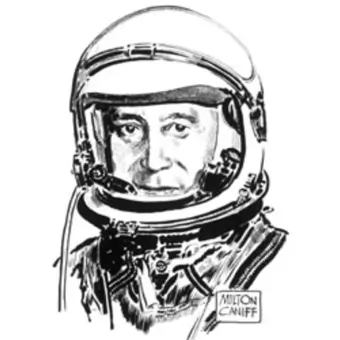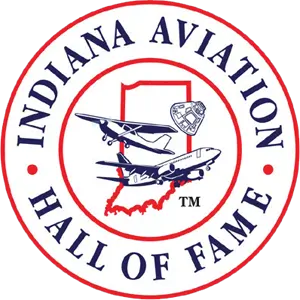
Virgil "Gus" Grissom
Virgil I. (Gus) Grissom was born in Mitchell, Indiana in 1929. A local businessman took Gus flying in a private plane and enlistment in the Army Air Corps soon followed. He would not see action in WWII. But after basic aviation cadet training and his discharge, Gus paid his way through Purdue University with the GI Bill and after-class work, graduating as a Mechanical Engineer in 1950. He re-enlisted in the (now) U.S. Air Force and earned his pilot wings in 1951.
Gus was assigned to combat missions in Korea. He distinguished himself with one hundred F-86 missions logged, earning the Distinguished Flying Cross and Air Medal with oak leaf cluster.
After returning to the U.S. as a flight instructor, Gus earned a degree in Aeromechanics from the U.S. Air Force Institute of Technology at Wright-Patterson Air Force Base in Dayton and then, in 1956, trained at Edwards Air Force Base (then called Muroc Air Force Base) as a test pilot.
Four year later he was named one of the original seven Project Mercury astronauts. In July 1961, Gus piloted the second Mercury Flight aboard Liberty Bell 7.
On his next space flight, Gus was assigned to the first manned Gemini mission with John Young, making him the first man to fly twice into space.
Gus brought both flying and engineering skills to the space program. Besides commanding Mercury and Gemini flights, he helped design the Gemini multi-axis thrusters which facilitated spacecraft maneuvering and, later, spacecraft docking. He also worked to identify and resolve many problems with the Apollo spacecraft system while being named the command pilot of the inaugural Apollo mission.
Tragically, Gus was killed a fire in the Apollo 1 capsule during a simulated launch exercise along with fellow astronauts Ed White and Roger Chaffee.
Lt. Col. Virgil I. (Gus) Grissom’s distinguished career included over 4,600 hours of flight time, the Congressional Space Medal of Honor, the NASA Distinguished Service Medal and the Exceptional Service medal. He was inducted into the National Aviation Hall of Fame in 1987 and the U.S. Astronaut Hall of Fame in 1990. As further testament to his contributions to aviation, military and space flight, the Grissom Crater on the Moon, Grissom Hill on Mars, Grissom Air Reserve Base (identifier GUS) and the Purdue University School of Aeronautics and Astronautics Grissom Hall were named in his honor.
For his extraordinary achievement and service to aviation, space flight, Indiana, the nation and the world, and his service to the country, Virgil I. “Gus” Grissom is inducted into the Indiana Aviation Hall of Fame the 8th day of July, 2020.
